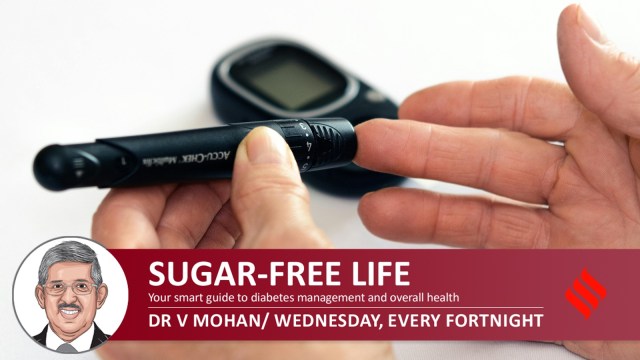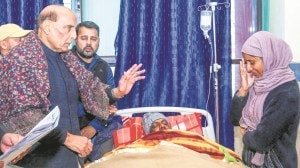- India
- International
Can you stop prediabetes? Here’s how this blood sugar test can help
Dr V Mohan, Chairman, Dr Mohan’s Diabetes Specialities Centre, Chennai, explains a practical protocol for oral glucose tolerance tests
 In a person with diabetes, blood sugar levels will remain high. (Pexels)
In a person with diabetes, blood sugar levels will remain high. (Pexels)Given that Indians progress very quickly from prediabetes to diabetes, what if you had a test to indicate that you are going off the rails even before and correct your body metabolism to nip the problem in the bud? That may now be possible with the International Diabetes Federation (IDF) restoring the one-hour rule in the oral glucose tolerance test (OGTT). This means that instead of waiting for two hours, one should take an in-between reading after one hour of taking a glucose solution. That test is crucial to detect intermediate spikes in blood sugar, which are fairly indicative of blood sugar metabolism even when your fasting and post-prandial readings aren’t high enough to indicate diabetes.
WHAT IS AN OGTT TEST? WHAT’S THE ONE-HOUR RULE ALL ABOUT?
The OGTT is a lab test to check how your body processes sugar from the blood into tissues like muscle and fat. If a person does not have diabetes, their blood glucose level will rise after they eat a sugary solution and return to normal after their body absorbs the glucose. In a person with diabetes, blood sugar levels will remain high. This gold standard test measures this response and determines the stage of your diabetes.
It’s rather simple. Your blood sample is taken when you wake up after fasting for at least eight hours. Then you are given a solution of glucose (usually 75 gm of it), which you have to drink in five minutes or less. The one-hour test means your blood must be drawn exactly one hour from the time you started drinking the glucose drink. You cannot eat or drink anything in between. Abnormal glucose tolerance (blood sugar goes too high during the one-hour challenge) is an earlier sign of diabetes than an abnormal fasting glucose.
WHY WAS THE ONE-HOUR RULE RESTORED?
The OGTT was originally a five-sample test where the blood samples were drawn at zero or fasting level, then at 30 minutes, 60 minutes, 90 minutes and 120 minutes. This was followed for many years until the National Diabetes Data Group in the US, around 1979, condensed the test to two samples, one at zero hours after fasting and the other after two hours. If the fasting reading is below 100 mg/dL, it is considered normal. A reading between 100 to 125 mg/dL is prediabetes and above 126 mg/dL is diabetes. As for a sample taken after a two-hour gap, a reading of 140 mg/dL is normal, between 140 mg/dL and 199 mg/dL is prediabetes or impaired glucose tolerance and 200 mg/dL is diabetes.
However, conventional diabetologists like me continued to take the 60-minute sample test while doing OGTT. Even if the fasting and the two-hour values are normal, an elevated one-hour value of more than 155 mg/dL is a red flag; it means that these individuals will progress to prediabetes in the near future.

The advantage is that you can identify cases even before slipping into the prediabetes stage and the reversal to normal levels is much easier. Also preventive lifestyle corrections like diet, exercise and weight loss can begin at the right time to prevent progression. As this is an indicator of abnormal metabolic state, it means it is also time to watch your serum lipids and BP. In most cases of one-hour readings among patients, there is evidence of inflammation and fatty liver in subsequent tests.
In India, we continued publishing our observations on the value of the one-hour OGTT. Several other scientists in different parts of the world came to the same conclusion as ours. It is after compiling all the evidence that the IDF advocated the continuation of the test at the one-hour mark. Labs can now follow these guidelines.
Apr 05: Latest News
- 01
- 02
- 03
- 04
- 05





























